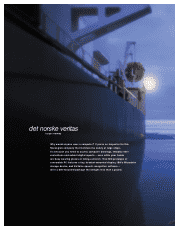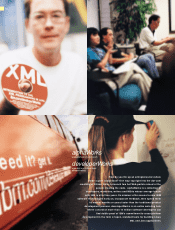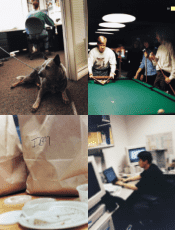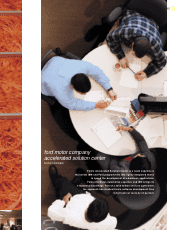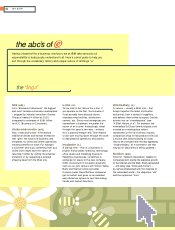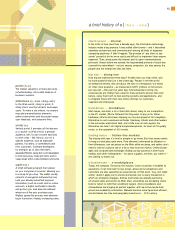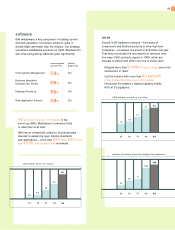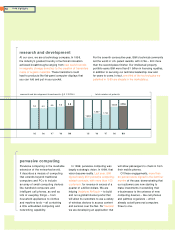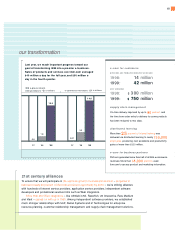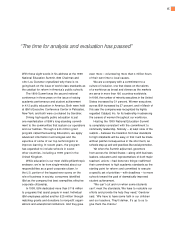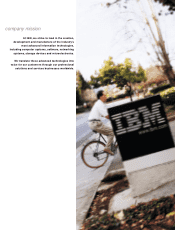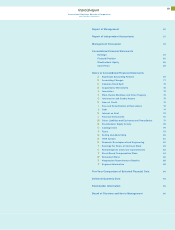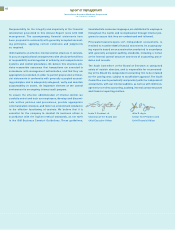IBM 1999 Annual Report Download - page 42
Download and view the complete annual report
Please find page 42 of the 1999 IBM annual report below. You can navigate through the pages in the report by either clicking on the pages listed below, or by using the keyword search tool below to find specific information within the annual report.
40 your guide
the abc’s of
Having unleashed the e-business revolution, we at IBM take seriously our
responsibility to help people understand it all. Here’s a brief guide to help you
sort through the vocabulary, history and unique culture of all things “e.”
B2B (adj.)
As in “Business-to-Business,” the biggest
and most lucrative e-business marketplace
– pegged by industry consultant Gartner
Group at nearly $4trillion by 2003,
compared to estimates of $380 billion
for B2C (Business-to-Consumer).
clicks-and-mortar (adj.)
Also “clicks-and-bricks.” A heretofore
traditional (bricks-and-mortar) enterprise
that “gets” the value of e-business and
integrates its online and offline operations,
creating benefits for each. For example,
a customer who buys something from your
online store might have the option of
returning it either by visiting the physical
storefront or by requesting a prepaid
shipping label from the Web site.
e-line (n.)
You’re said to be “above the e-line” if
you operate on the Net. You’re below it
if you actually have physical stores,
manufacturing facilities, distribution
centers, etc. Since most enterprises are
somewhere in between, we prefer the
notion of an e-zone. Interestingly, travel
through the zone is two-way – witness
AOL’s planned merger with Time Warner
(a dot-com moving down through the zone
to add physical operations and assets).
incubator (n.)
A startup nest – that is, a business or
project that provides financing, technology,
office space and marketing muscle to
fledgling e-businesses, sometimes in
exchange for equity in the new company.
IBM’s involvement in incubator programs,
such as our joint venture with Silicon Valley
Bank and Internet service provider
Conxion, helps these NetGen companies
get to market, and gives us an excellent
early-detection system to spot technology
trends and market directions.
infomediary (n.)
A service – usually a Web site – that
brings together the latest information
and prices from a variety of suppliers,
and delivers them online to buyers. Quickly
evolves into an “e-marketplace” (see
“A Brief History of e”). For example, the
infomediary SciQuest (www.sciquest.com)
created an e-marketplace where
researchers in the life sciences industry
comparison shop for lab products with just
a mouse click before placing an order.
(Not to be confused with the less-appealing
“infodromedary,” an e-commerce site that
may go for days without being updated.)
NetGen (adj.)
Short for “Network Generation.” Applies to
companies born during the explosive growth
of the Internet and the Web. Easily recognized
– until lately (see “clicks-and-mortar”) –
by names emblazoned with the insignias of
the networked world – the ubiquitous “dot”
and the mysterious “com.”
the “lingo”




